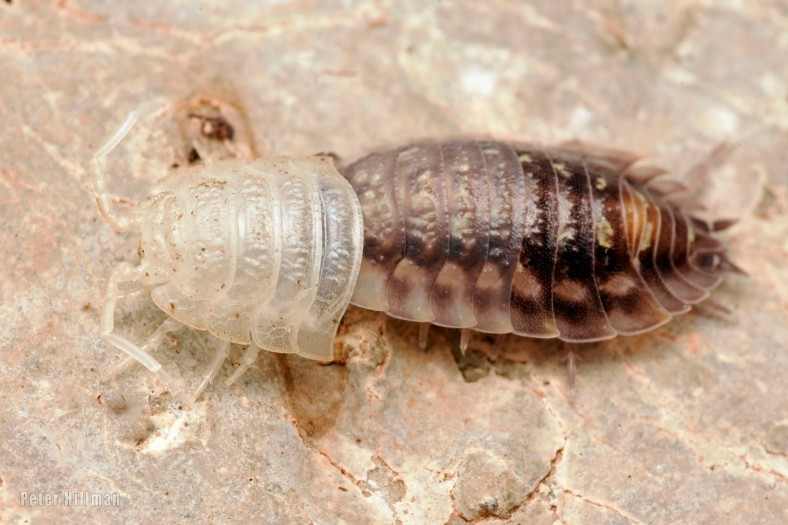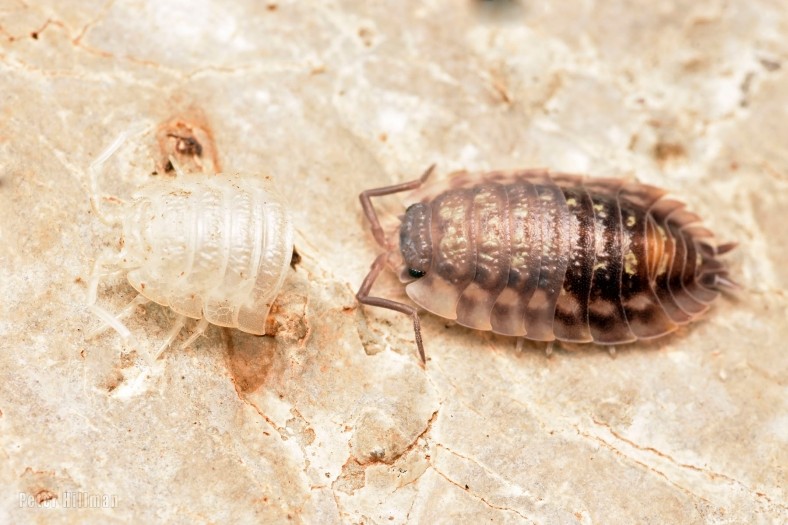x3 images. Double click to enlarge.
Introducing the Ant Woodlouse Platyarthrus hoffmannseggii. Growing up to a length of 5 mm (1/4 in), it is blind and spends all of its life underground. It is always nearly found in association with ants within their nests where they have a good relationship. The woodlouse is tolerated and is not under any threat, most likely because it acts as a house keeper for the ants, feeding on their ant droppings hence keeping the nest clean.
A fairly slow-moving woodlouse, and the darkish stripe along the back is the contents of the gut showing through the cuticle. It is widespread across southern Britain, less so and becoming much rarer further north.
























